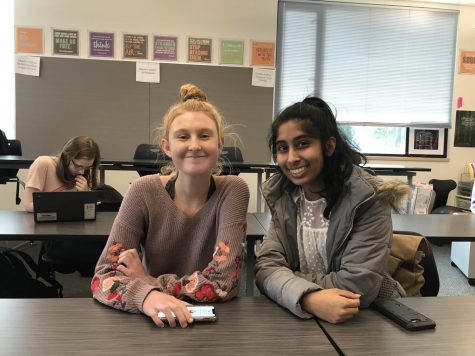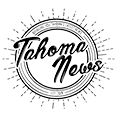Sexism in AP Computer Science

January 26, 2018
You remember Rosie the Riveter, right? The poster played an important role in the war effort of World War II, encouraging women to join the workforce while their husbands fought on the front lines. Though future propagandizing posters encouraged women to leave the workforce after the war was over and give the jobs back to the men who could really do them, a lot of women never left. In the United States labor force, women make up over 50% of biological and medical scientists but in computer and mathematical occupations, they make up only 25.6%. Though this number is not near a 50/50 split between males and females, it is encouraging young women to break barriers and glass ceilings.
Mr. Johnson teaches the AP Computer Science class at Tahoma with the help of volunteers from Microsoft who are part of a program that encourages computer scientists to get back into the classroom. They teach concepts, grade assignments and tests, and provide help to students.
However, recently, female students from the class have expressed concern to Mr. Johnson about the discrepancy between their grades and the grades of their male peers. Hannah Davis, a Tahoma junior, said “We would do the exact same thing as the boys and get a different score”.
Estelle Neathery, also a junior, provided an example: “We had this project that was like 100 points and he gave me a C and gave [male student] full credit.” She asked the Microsoft volunteer what she needed to fix and he told her.
“So I asked if he told [male student] that he needed to fix those things, too” Estelle explained. Estelle alleges that he replied by saying “Well, I’m not perfect.”
Katarina Zosel, a senior this year and a hard working student, said of the volunteer’s grading, “One of my male friends in the class had only done half of the project. I had completed the project, it was perfect except two of the titles, called methods, were wrong and he only missed three more points than me.”

The AP Computer Science class at Tahoma is 24% female with just seven girls in the class of twenty nine. “The female programmers in my class are the hardest workers” Mr. Johnson stated. So, when he learned of the biased grading coming from one Microsoft volunteer, he confronted him. “He wasn’t willing to change, so he just quit” Mr. Johnson explained.
Before the volunteer decided to leave the program, Mr. Johnson said: “I told my wife and asked her what she would do.” Heeding the advice of his wife, Mr. Johnson asked the girls in his class if they would like a chance to speak with the volunteer unfairly grading their assignments, however, they declined the offer.
Women are earning a near equal proportion of bachelor’s degrees in STEM (Science, Technology, Engineering, and Mathematics) fields, but are often not continuing into STEM jobs.
Mr. Johnson tacked this up to “the culture.” He explained that the field is “More white male based and a lot of the males in the field, they don’t look at female programmers as equals”.
Recognizing the irony in the computer science culture, Mr. Johnson gave a smile, ”Female programmers…They’re better. If I’m being honest. They don’t get off task.”
Women in STEM face bias and blatant harassment so severely while earning their bachelor’s that it keeps them from using their degrees and entering the workforce in the STEM field.
Mr. Johnson hopes to combat this. “I’d never want a female student to feel disrespected. I grew up with a single parent, a single mom” he explained.
Women today are forging new paths in fields they previously could not enter, most often without the help of supportive teachers like Mr. Johnson. Even more impressive, women today are forging new paths without a world war, without Rosie the Riveter, and in a culture of sexual harassment, assault, and discrimination. And they don’t even get off task.


